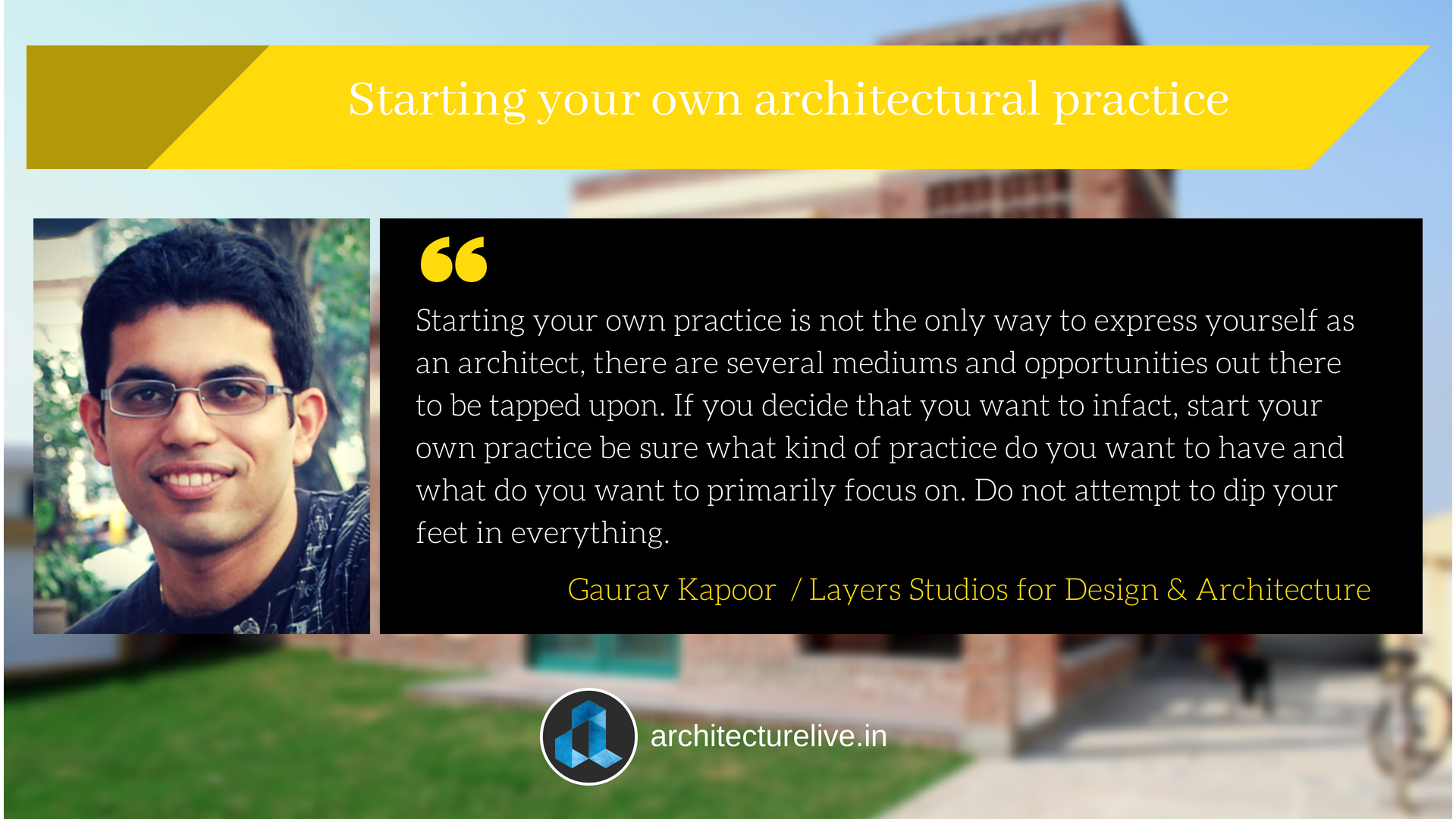In conversation with Gaurav Kapoor, principle architect and co-founder of Layers Studios for Design & Architecture in Delhi. Along with partner Neha Bhardwaj, he works in the field of architecture, landscape design and interior design with the pursuit of developing an architecture practice which can incorporate local traditions, international ideas, respect for the environment and cutting-edge technology in its design sensibilities.
Gaurav brings forward the challenges that he had to overcome in the initial years of starting his own practice. Having started just two years after completing his bachelor’s in architecture, Gaurav had to come across the realities of the multiple facets of starting his own practice on the go.
“Experience becomes a factor when clients are looking for suitable architects for their upcoming projects. This becomes arduous for new architects who do not have a portfolio showcasing their work, to acquire projects.”
Gaurav argues that full design control which comes with starting your own practice often comes at the cost of learning how to successfully handle a business and being equally or more involved in the financial and logistic aspect of the practice than the creative end that one aspires to be on.
One has to go above and beyond their role as a designer and confront the business management side of the profession. An aspect which is not the area an architect usually thrives in.
It becomes imperative then to acknowledge that just knowing how to design does not make one competent to successfully running a practice. Having your own firm is not just about the quality of design that you provide but also the quality of service that you render. He says,
“Most of the learning happens on the ground, as you go about with your practice. You realize there is a lot that you do not have a predisposed knowledge of – how to file taxes; the type of firm you should have, how much fees to quote, understanding the circuit, negotiating with different vendors. We learnt by making mistakes. Initially, there were a lot of mistakes.”
On whether it is better to start after graduation or after working with other practices before venturing into Architecture Entrepreneurship, he comments – “There are arguments for and against starting right after graduation, if you start earlier – you lack experience, but you have lesser personal stakes. Starting late, say maybe ten years after graduating from college can lead to further complication.
Establishing your practice takes time. Patience becomes key.
It helps to initially keep your expectations low and just focus on producing good work. We knew that we wouldn’t be earning well initially, it is a very under-paying enterprise. We would work with short term goals, say for two months and try to deliver it.”
He continues, “When we started in 2009, our primary aim was to get good projects. The architecture fraternity, surprisingly, aided us. In architecture, you often get projects through referrals.”
He says, “since we had established a rapport with our previous employer, occasionally they would refer us for a project. Even our faculty at School of Planning and Architecture, Delhi would sometimes recommend us for projects. Sometimes they would also give guidance in the business aspect of architecture. When we started we were unaware of the market, or how much fees to quote so we would often end up undercutting ourselves.”
Although the trepidations are frequent to starting your own practice, Gaurav believes it can be a learning tool as an architect and as an individual. “My motto was to be steady and persistent. Do not over plan or anticipate things – just give your best irrespective of the scale of your project.”
To further strengthen his opinion, he exemplifies – “Initially we used to get small scale projects like renovations or doing interiors for residences. We started getting larger projects by 2012. In fact, till 2017 it was just Neha and I running our practice; we did not even have an intern.
Four years after establishing our firm, we were in a condition to have appropriate client base with often getting repeat projects from the same clients and an understanding – a brief one on how to run a practice.”
Gaurav succinctly states the realities that pertain to starting your own practice. Although he believes that starting your practice is a medium for self-expression as an architect, he would like the readers to understand that this partakes a lot more than design skills and only if you are adept to handling entrepreneurship, can your firm survive.
He concludes, “Starting your own practice is not the only way to express yourself as an architect, there are several mediums and opportunities out there to be tapped upon. If you decide that you want to infact, start your own practice be sure what kind of practice do you want to have and what do you want to primarily focus on. Do not attempt to dip your feet in everything.”








